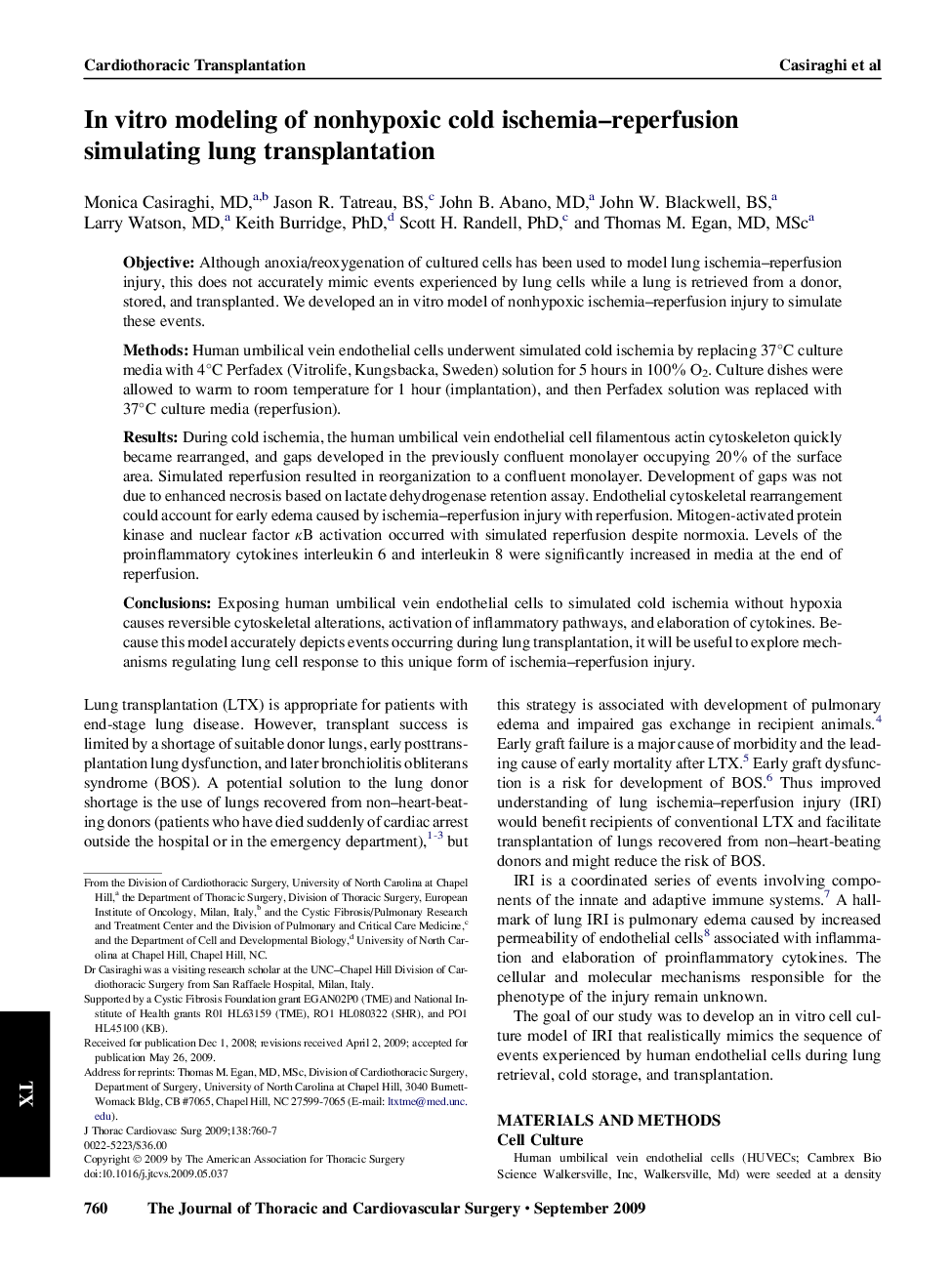| کد مقاله | کد نشریه | سال انتشار | مقاله انگلیسی | نسخه تمام متن |
|---|---|---|---|---|
| 2985583 | 1578670 | 2009 | 8 صفحه PDF | دانلود رایگان |

ObjectiveAlthough anoxia/reoxygenation of cultured cells has been used to model lung ischemia–reperfusion injury, this does not accurately mimic events experienced by lung cells while a lung is retrieved from a donor, stored, and transplanted. We developed an in vitro model of nonhypoxic ischemia–reperfusion injury to simulate these events.MethodsHuman umbilical vein endothelial cells underwent simulated cold ischemia by replacing 37°C culture media with 4°C Perfadex (Vitrolife, Kungsbacka, Sweden) solution for 5 hours in 100% O2. Culture dishes were allowed to warm to room temperature for 1 hour (implantation), and then Perfadex solution was replaced with 37°C culture media (reperfusion).ResultsDuring cold ischemia, the human umbilical vein endothelial cell filamentous actin cytoskeleton quickly became rearranged, and gaps developed in the previously confluent monolayer occupying 20% of the surface area. Simulated reperfusion resulted in reorganization to a confluent monolayer. Development of gaps was not due to enhanced necrosis based on lactate dehydrogenase retention assay. Endothelial cytoskeletal rearrangement could account for early edema caused by ischemia–reperfusion injury with reperfusion. Mitogen-activated protein kinase and nuclear factor κB activation occurred with simulated reperfusion despite normoxia. Levels of the proinflammatory cytokines interleukin 6 and interleukin 8 were significantly increased in media at the end of reperfusion.ConclusionsExposing human umbilical vein endothelial cells to simulated cold ischemia without hypoxia causes reversible cytoskeletal alterations, activation of inflammatory pathways, and elaboration of cytokines. Because this model accurately depicts events occurring during lung transplantation, it will be useful to explore mechanisms regulating lung cell response to this unique form of ischemia–reperfusion injury.
Journal: The Journal of Thoracic and Cardiovascular Surgery - Volume 138, Issue 3, September 2009, Pages 760–767